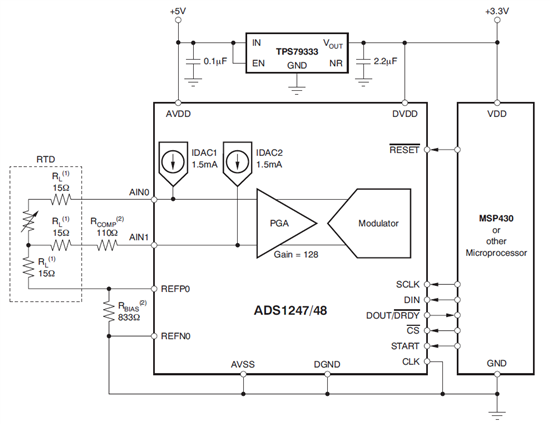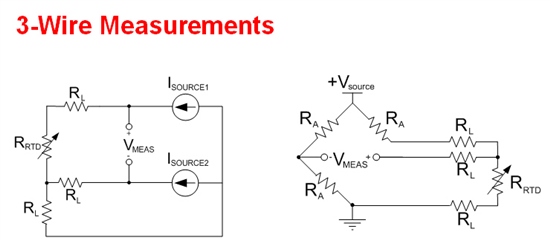Hi all!!!
I want to use ADS1247 for temperature sensing with PT100.
Either 3 wire or 4 wire circuit is fine, but please specify what is the advantage or disadvantage using any of them...?
In the document slyp160(http://www.ti.com/lit/ml/slyp160/slyp160.pdf) page18, the PT100 is used with the bridge circuit, Is it really required to use a bridge circuit with PT100..?
Thanks and regards
-Anand




